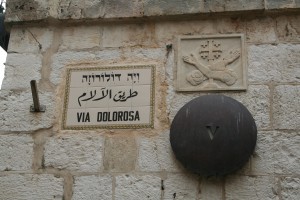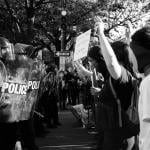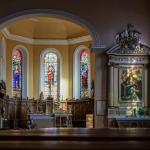
Here I’ve written only three words (see the title above) and already I feel like I have to be extra careful with my words. For of course the words “Holy Land” have layers of history, conflict and ambiguity built into them, because Israel is regarded as holy by three major faiths—Judaism, Christianity and Islam—as well as one lesser-known religion, the Bahá’í faith. So whose Holy Land is it?
“In Israel, words can have the force of weapons,” one of our guides told me on my recent trip. Perhaps that explains why I’ve been struggling to form my words about Israel ever since returning from a trip there in late January. You should realize that everything I write about it must be viewed as tentative, partial and subject to revision, depending upon my mood or the day. Over the years Bob has remarked on how often I preface what I say with the phrase, “Well, it’s complicated….” After coming back from my trip, let me say this: “Israel is really, really, really, really complicated.”
I traveled to Israel with the Society of American Travel Writers. I wasn’t itching to travel again so soon after New Zealand, to be honest, but when the opportunity arose I couldn’t turn it down. The Holy Rover decline the chance to tour Israel? Not in this lifetime.
For many of us, of course, Israel seems familiar, for even if we’ve never traveled there, we’re familiar with the landscape through the Bible. Places like the Sea of Galilee, Capernaum, Nazareth and Jerusalem live in our imagination. What I found in Israel is that the contemporary reality of these places is deeper, richer and more complex than I had expected. Some sites were extraordinarily moving to me; others were disappointments.
Israel is a place of contrasts, encompassing both the very old and the very new. It’s one of the most high-tech countries in the world, and yet you can still see shepherds tending their sheep on its hillsides. While Jerusalem remains the symbolic heart of the country, about half of Israeli citizens live in the area around Tel Aviv, which is one of the most gay-friendly cities in the world. About 80 percent of the Israeli population is Jewish, with the remaining 20 percent split between Muslims, Christians and Druze. And while Israel is famous for its religious sites, its people are not particularly religious. The large majority of its Jewish citizens consider themselves secular, in fact. About 20 percent of the Jews in Israel, however, are either orthodox or ultra-orthodox, a minority that wields political power far larger than its size would suggest.
You’ll be relieved to hear that I won’t tell you about every place I visited. I won’t spend much time talking about the current political realities in Israel and the West Bank, either, though we had quite a few conversations with our guides about the tangled political scene and I visited the Palestinian-held West Bank briefly. What I hope to do instead is convey over the next week something of the magnetic appeal of Israel’s sacred sites.
In Israel perhaps more than any other place on earth, each traveler will see the landscape differently because of the lens of faith. “This is a place where the Bible becomes three-dimensional,” said one of my guides, and the more I traveled in Israel, the more that seemed true.











